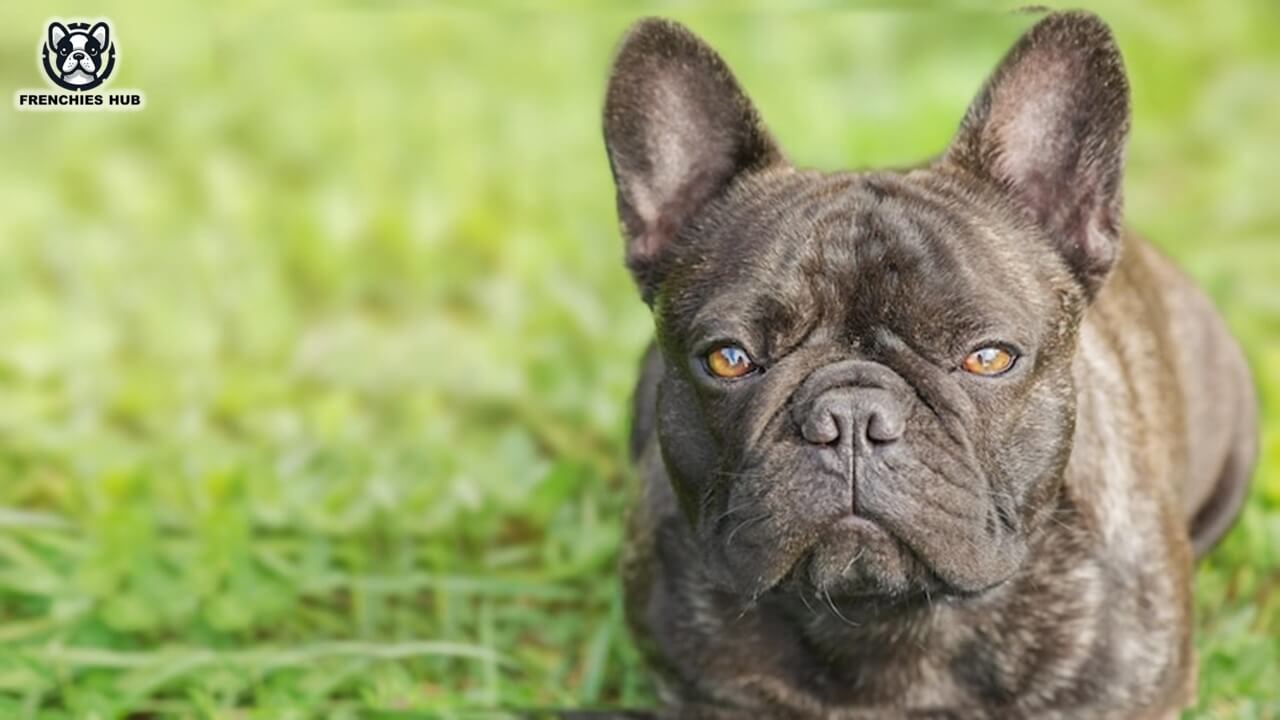The Black Brindle French Bulldog, a breed as captivating as it is unique, has a way of stealing the hearts of dog enthusiasts across the world. Their striking appearance, marked by a distinctive coat with a stunning black brindle pattern, sets them apart from their counterparts. What truly defines this breed, however, is not just their look, but their endearing bat-like ears, compact size, and expressive eyes. These features together create an affectionate nature that resonates deeply with families, singles, and seniors alike, making them ideal companions.
In this article, we delve into the characteristics that make the Black Brindle French Bulldog so delightful. The charm and elegance of their disposition not only radiate a warm and friendly vibe but also reflect a personality that is both loving and loyal. As an owner of one of these adorable dogs, I’ve experienced firsthand their ability to adapt to different environments and their eagerness to be involved in all family activities. From care requirements to addressing frequently asked questions, this subsection aims to provide all the information you need about these wonderful dogs.
History of Black Brindle French Bulldog
Early Beginnings in England
In the mid-1800s, the popularity of the toy-sized Bulldog surged in English cities, notably Nottingham, a hub for lace production. These Bulldogs, often seen as mascots for Nottingham’s lace manufacturers, symbolized the height of the Industrial Revolution in England. As cottage industries transformed the economic landscape and lacemaking faced challenges, many from the lace industry migrated to northern France, bringing their cherished doll Ies with them.
The French Transformation
In France’s French countryside, these small dogs thrived among lace manufacturers. Over decades, toy Bulldogs were bred with breeds like terriers and pugs, developing their iconic bat ears. The breed was christened with the French name ‘Bouledogue’, marking the birth of an adorable new breed. The Frenchie’s fame soared in Paris, symbolizing the quintessential city dog amid elegant ladies, bon vivants, and the vibrant nightlife of Parisian dancehalls and café culture. Celebrated in the artworks of Toulouse-Lautrec and Edgar Degas, the Frenchie became a part of the Paris demimonde.
Rise to Global Popularity
By the late 19th century, the breed had won hearts across Europe and America, though it was less favored in England, where it clashed with the image of a national symbol. In the Early 1900s, American aficionados asserted the bat ear as the hallmark of the proper Frenchie form, differentiating it from the rose ear and solidifying its breed standard.
Modern Evolution and Social Media Influence
The breed’s evolution continued with Don Chino’s Modern French Bulldog, featuring new colors like blue, lilac, chocolate, rojo chocolate, and isabella. By 2015, these Frenchies had become especially popular among middle and high class family households and celebrities such as Reese Witherspoon, The Rock Dewayne Johnson, and Lady Gaga. The influence of social media, especially Instagram and Facebook, skyrocketed their fame. Breeders in the Frenchie community reported a staggering one million impressions daily, reaching a worldwide audience. 2018 saw the introduction of the Miniature French Bulldog by the Designer Kennel Club, and 2022 brought in the Fluffy French Bulldog and the first Hypoallergenic French Bulldog.
The Genetics Behind The Brindle Pattern
My journey into the world of canine genes has always been driven by a fascination with coat color and its inheritance patterns. Particularly intriguing is the black brindle French Bulldog, a breed that showcases a stunning tapestry of colors. The key player in this genetics game is the K-locus gene, acting as a master switch that orchestrates the array of brindle combinations seen in these charming canines.
At the core of this topic lies the role of the K-locus in determining whether a Frenchie puppy will exhibit the brindle pattern. It’s not as simple as it seems; the genetics behind the coat color are akin to a delicate dance. When it comes to inheriting this distinctive pattern, it’s essential to understand that both parents play a significant part. If both parents are carrying the recessive gene for brindle, their offspring has a higher chance of being a black brindle pup. This pattern, where a dominant color does not always prevail, makes the breeding of French Bulldogs a fascinating and sometimes unpredictable venture.
However, the base color of the Frenchie puppy can also influence the appearance of the brindle pattern. The brindle essentially tops the base coat, creating a layered look of intricate beauty. From black to fawn, the underlying color can significantly impact how pronounced or subtle the brindle pattern appears. As a starters guide for those familiar with the breed, it’s important to delve deeper into the interactions between these genes to fully appreciate the breathtaking diversity of these beloved dogs.
Appearance and Characteristics
In the realm of appearance, this breed showcases a unique coat pattern that captivates onlookers. The brindle pattern of black stripes against a lighter background gives them a visual appeal filled with individuality. Size-wise, they are a small to medium-sized breed, usually tipping the scales between 16 to 28 pounds. Their physique is a perfect blend of muscular build and sturdy frame, leading to a balanced appearance. The coat is short and smooth, adding to their dignified yet approachable look.
Temperament and Personality
When it comes to temperament, the Black Brindle French Bulldog is the epitome of an affectionate and sociable nature. They form strong bonds with their owners and easily adapts to various living situations, making them suitable for both bustling family homes and quiet apartments. Their playful demeanor makes them excellent companions, especially for families with children. Despite their compact size, these dogs have a big heart and a willingness to please, which makes training them a joyful experience.
Care and Grooming
Caring for a Black Brindle French Bulldog involves a dedicated approach to their proper nutrition, regular exercise, and routine grooming. Their short coat demands surprisingly low grooming needs, although occasional brushing keeps their fur healthy and shiny. Particular attention should be given to their facial folds to prevent moisture buildup. A balanced diet and active lifestyle are key to maintaining their overall well-being.
Health Considerations
Like all dog breeds, the Black Brindle French Bulldog is susceptible to certain health conditions. They may face challenges like hip dysplasia, brachycephalic obstructive airway syndrome (BOAS), and skin allergies. However, these risks can be mitigated through regular veterinary check-ups and a healthy lifestyle, ensuring your furry friend enjoys a long and happy life.
Training and Socialization
Training a Black Brindle French Bulldog is an enjoyable experience, thanks to their intelligent and eager-to-learn attitude. Employing positive reinforcement techniques yields the best results. Early socialization is also crucial for these dogs. Exposing them to different people, animals, and environments during their puppyhood helps to shape a friendly and adaptable temperament, ensuring they grow into well-mannered adults.
Price Of A Black Brindle Frenchie
When venturing into the world of French Bulldogs, it’s essential to understand that these delightful dogs are far from cheap. As an owner and enthusiast of this dog breed, I’ve learned that the journey starts with the initial purchase price, but the financial commitment doesn’t end there. The Black Brindle Frenchie is not just a pet; it’s a responsibility that requires a well-planned budget. This includes not only the cost of buying but also the ongoing expenses of raising such a unique breed.
While the striking coat color of the Black Brindle makes it a common choice among enthusiasts, it’s important to remember that these dogs are pricey. For those seeking pet-quality puppies, prepare to invest around $4,000. And if your heart is set on show-quality dogs, the price can climb even higher. But the expenses don’t stop at the purchase price. The first year can be the toughest, with unexpected expenses popping up that can feel a bit overwhelming. From kibble and dog beds to grooming supplies and expensive harnesses, every item adds to the overall cost. However, as time goes by, things tend to get easier, with the big expense primarily being the dog food. Thankfully, Frenchies don’t eat a lot, which is less scary for the wallet. Nevertheless, ensuring you can provide the best for your beloved Frenchie is crucial, even if it costs an arm and leg.
Conclusion
The Black Brindle French Bulldog stands out as a truly remarkable breed, not just for its unique appearance but also for its endearing personality. As an avid enthusiast and caregiver of this breed, I’ve observed how their striking black brindle coat captivates everyone’s attention. It’s not just the looks that make them special; their friendly and adaptable nature makes them an ideal addition to various households. The key to unlocking the full potential of these adorable companions lies in providing them with proper care, consistent training, and abundant affection.
Frequently Asked Questions (FAQs)
Is a Black Brindle French Bulldog a good choice for apartment living?
Definitely! Their small stature and moderate need for exercise make them ideal for living in apartments.
How well do they interact with other pets?
Generally, they are quite sociable with other pets, especially when they have been socialized early on.
What are the grooming requirements for a Black Brindle French Bulldog?
Regular brushing once a week is typically enough to maintain their coat’s health. It’s also important to clean their facial creases to avoid any irritation.
Do Black Brindle French Bulldogs tend to bark a lot?
They might alert you to unfamiliar situations, but they are not known to be excessively vocal.
What’s the typical lifespan of this breed?
Black Brindle French Bulldogs usually live between 10 to 12 years, but with attentive care, some may enjoy a longer life.
Are they suitable for families with children?
Absolutely, their gentle and playful demeanor makes them wonderful companions for kids.

